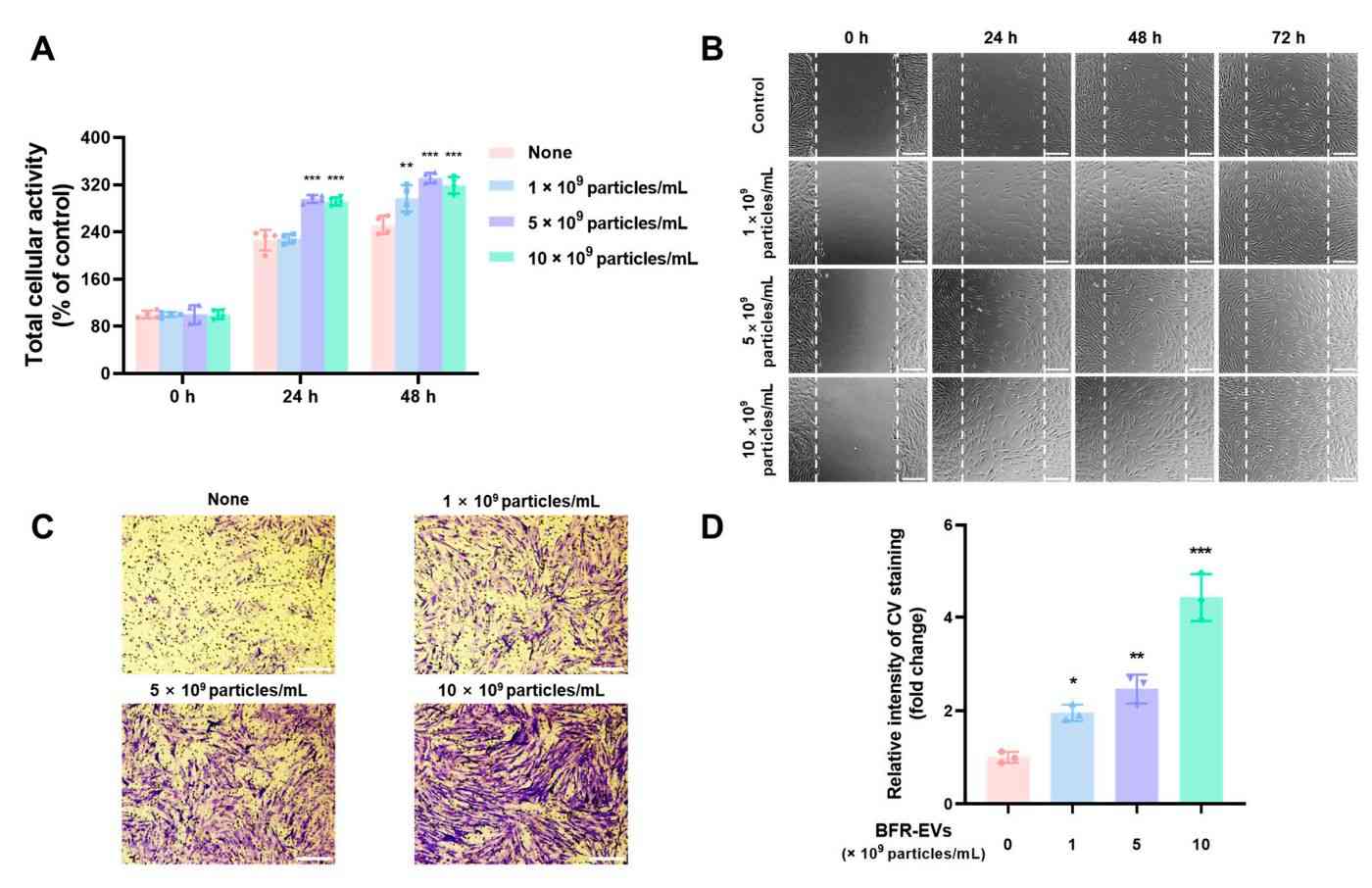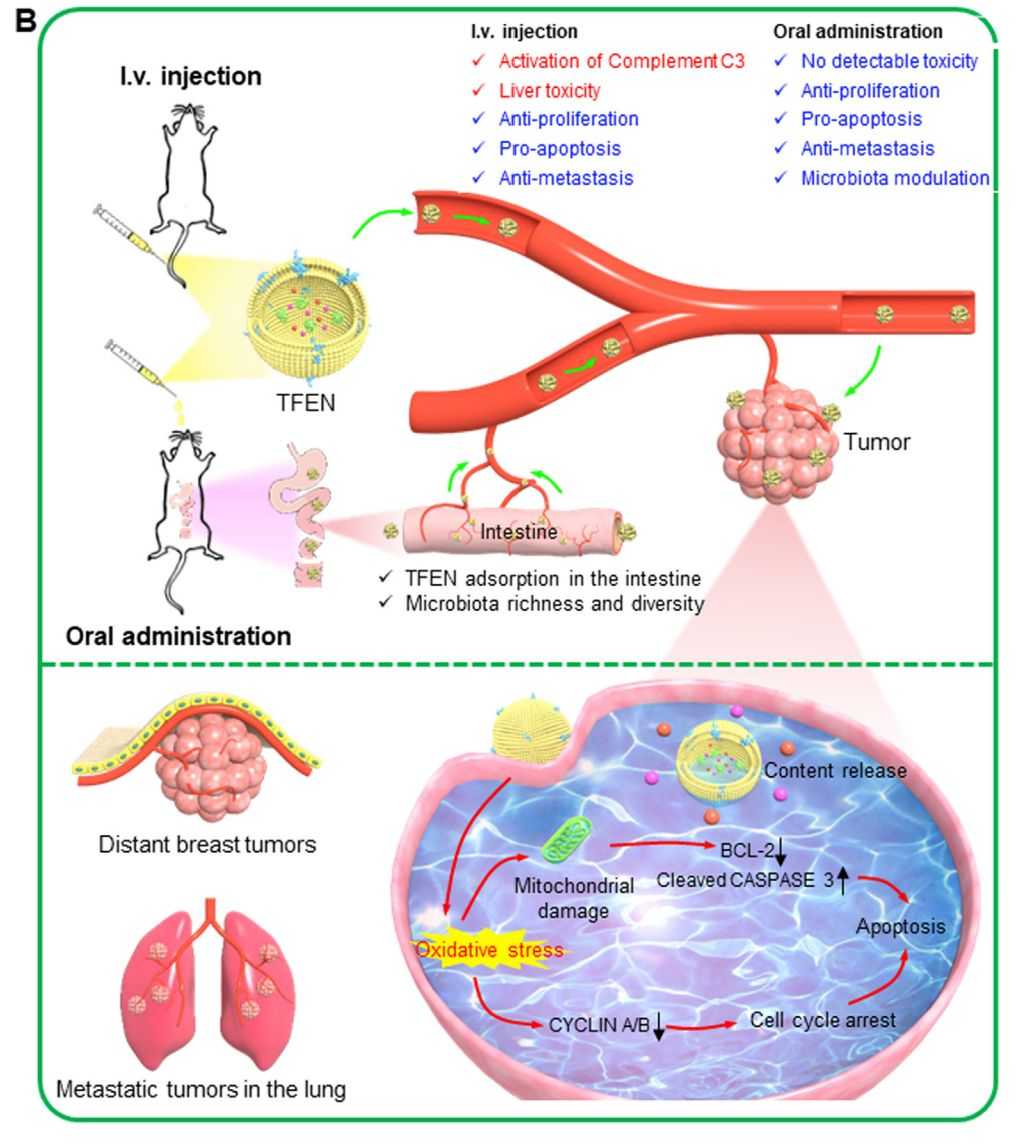Research on Flower-derived Exosome
Nanotechnology has been successfully applied in the treatment of various diseases. Plant-derived exosomes are promising for treating diseases or as drug delivery carriers. Of these, flower-derived exosomes are extracellular vesicles secreted by various flower tissue cells, which play important roles in intercellular communication and plant defense. In recent years, flower-derived exosomes have attracted research interest due to their potential therapeutic and cosmetic benefits.
Why Study Flower-Derived Exosomes?
- Flower-derived exosomes have antioxidant, anti-inflammatory, and regenerative properties that can be used in the development of cosmetic formulations for skin care and anti-aging.
- Flower-derived exosomes are highly biocompatible and targetable and can be used to deliver therapeutic agents to specific tissues or organs.
- Flower-derived exosomes have shown promise in agricultural applications, helping to develop resistant plants.
How to Prepare Flower-derived Exosomes?
Isolation of flower-derived exosomes typically involves a multi-step process that combines multiple techniques to isolate and purify exosomes from plant material.
 Figure 1. Catharanthus roseus exosome preparation process. (Ou X, et al., 2023)
Figure 1. Catharanthus roseus exosome preparation process. (Ou X, et al., 2023)
1. Sample Preparation
Flower tissue, such as petals, leaves, or stamens, is collected and washed to remove any surface contaminants. The floral material is homogenized or ground into a fine powder to release cellular contents, including exosomes. The homogenate or powder is then filtered or centrifuged at low speed to remove larger cellular debris.
2. Differential Ultracentrifugation (dUC)
After filtration or centrifugation, the sample is subjected to a series of centrifugation steps at progressively increasing speeds to separate the exosomes according to their size. Typically, samples are first centrifuged at low speeds (e.g., 300-500g) to remove larger cellular components, and then centrifuged at high speeds (e.g., 10,000-20,000g) to precipitate the exosomes.
3. Density Gradient Centrifugation (DGC)
Use density gradient ultracentrifugation to further purify the precipitate-containing exosomes obtained in the previous step. Load the sample into a sucrose or iodixanol density gradient and centrifuge at a high speed (e.g., 100,000-200,000g). The exosomes will migrate to isodense points within the density gradient and thus be separated from other contaminants.
The choice of separation method usually depends on the specific floral source, the desired purity and yield of exosomes, and the intended downstream application. Further purification can also be performed by size exclusion chromatography (SEC) and affinity-based capture.
Physicochemical Characterization of Flower-Derived Exosomes
Flower-derived exosomes have physicochemical characteristics similar to those of animal exosomes. When observed under transmission electron microscopy, the morphology of exosomes is usually saucer or cup-shaped, which may be altered by manipulation of sample fixation, dehydration, and staining. Observation of samples under cryo-electron microscopy can result in relatively fixed exosome morphology. Several in vitro experiments confirmed that the particle size, morphology, surface charge, and other physicochemical properties of flower-derived exosomes remained stable under simulated gastrointestinal conditions, suggesting that they can be delivered to the body via an oral drug delivery system.
Applications of Flower-Derived Exosomes
- Cosmetics and Skin Care
The potential benefits of bioactive compounds and signaling molecules present in flower-derived exosomes have been explored in cosmetics and skin care products. These exosomes may have antioxidant, anti-aging, and skin regenerative properties that can be used to develop novel cosmetic formulations. The study found that the balloon flower root (BFR) contains bioactive components such as Platycodon saponins, which have anti-inflammatory and antioxidant properties. Researchers isolated BFR-derived extracellular vesicles (BFR-EVs), and the results showed the potential of BFR-EVs in the treatment of chronic wounds caused by ROS. In addition, BFR-EVs have a proliferation-promoting effect on human dermal fibroblasts (HDFs), which has the potential to serve as a natural candidate for healing chronic skin wounds.
 Figure 2. Promotion Effects of BFR-EVs on Proliferation and Migration of HDFs. (Kim M, et al., 2023)
Figure 2. Promotion Effects of BFR-EVs on Proliferation and Migration of HDFs. (Kim M, et al., 2023)
- Biomedical Research and Therapy
Flower-derived exosomes have attracted interest in the biomedical field for their potential therapeutic applications. Researchers are exploring the use of these exosomes as drug delivery vehicles for their anti-inflammatory, anticancer, and immunomodulatory effects and as a source of bioactive compounds for medical therapy. For example, Catharanthus roseus leaf-derived exosomes remain stable in gastrointestinal simulants and promote macrophage polarization and lymphocyte proliferation, leading to their use in post-chemotherapy immune-assistive therapy applications. Natural exosomes from tea flowers contain high levels of polyphenols, flavonoids, and functional proteins that inhibit metastatic breast cancer through ROS generation and microbiota regulation. The active ingredient miR2911 in the exosomes of Lonicera japonica inhibits the proliferation of cervical cancer cells and induces apoptosis, which is important for the development of new therapeutic strategies for the treatment of HPV.
 Figure 3. Schematic of the anti-tumor functions of tea flower exosomes. (Chen Q, et al., 2022)
Figure 3. Schematic of the anti-tumor functions of tea flower exosomes. (Chen Q, et al., 2022)
- Nutraceuticals and Dietary Supplements
Flower-derived exosomes are being investigated as potential nutraceutical and dietary supplement ingredients due to their potential health-promoting effects. The biomolecular cargo of these exosomes, such as proteins, lipids, and bioactive plant-derived compounds, may provide a variety of health benefits when consumed.
- Agricultural applications
Flower-derived exosomes may be used in agricultural applications to enhance plant growth, development, and resistance. Exosomes may be able to transfer beneficial molecules, such as growth regulators and defense-related compounds, to other parts of the plant, thereby improving overall plant performance.
Although research into the applications of flower-derived exosomes is still in its early stages, there is a growing interest in these specialized plant-derived extracellular vesicles, highlighting the potential for biomedical applications. Ongoing studies are aimed at further elucidating the specific properties and functions of flower-derived exosomes to realize their full potential.
Creative Biostructure is a pioneering biotechnology company at the forefront of flower-derived exosome research and development. Utilizing the inherent advantages of these natural nanoparticles, We offer a comprehensive range of high-quality flower-derived exosome products and advanced functional analysis services. With a team of experienced scientists and state-of-the-art research facilities, we are committed to unlocking the vast potential of plant-derived exosomes for biomedical and skin care applications.
| Cat No. | Product Name | Source |
| PNE-FLP04 | PNExo™ Exosome-Lily | Exosome derived from Lily |
| PNE-FLL05 | PNExo™ Exosome-Jasmine | Exosome derived from Jasmine |
| PNE-FLD10 | PNExo™ Exosome-Daffodil | Exosome derived from Daffodil |
| PNE-FLC13 | PNExo™ Exosome-Cactus | Exosome derived from Cactus |
| PNE-FLA16 | PNExo™ Exosome-Aloe | Exosome derived from Aloe |
| PNE-FLA19 | PNExo™ Exosome-Azalea | Exosome derived from Azalea |
| PNE-FLM21 | PNExo™ Exosome-Morning glory | Exosome derived from Morning glory |
| PNE-FLB23 | PNExo™ Exosome-Balsam | Exosome derived from Balsam |
| PNE-FLC24 | PNExo™ Exosome-Canna | Exosome derived from Canna |
| PNE-FLC30 | PNExo™ Exosome-Carnation | Exosome derived from Carnation |
| PNE-FLA31 | PNExo™ Exosome-Amaryllis | Exosome derived from Amaryllis |
| PNE-FLC42 | PNExo™ Exosome-Begonia | Exosome derived from Begonia |
| PNE-FLA43 | PNExo™ Exosome-Anemone | Exosome derived from Anemone |
| PNE-FLD46 | PNExo™ Exosome-Dogwood | Exosome derived from Dogwood |
| PNE-FLD51 | PNExo™ Exosome-Daphne | Exosome derived from Daphne |
| PNE-FLH55 | PNExo™ Exosome-Honeysuckle | Exosome derived from Honeysuckle |
| PNE-FLO58 | PNExo™ Exosome-Osmanthus fragrans | Exosome derived from Osmanthus fragrans |
| PNE-FLL61 | PNExo™ Exosome-Lydrangea | Exosome derived from Lydrangea |
| PNE-FLF63 | PNExo™ Exosome-Forget-me-not | Exosome derived from Forget-me-not |
| PNE-FLM66 | PNExo™ Exosome-Magnolia | Exosome derived from Magnolia |
| PNE-FLC68 | PNExo™ Exosome-Cockscomb | Exosome derived from Cockscomb |
| PNE-FLG70 | PNExo™ Exosome-Green Tea | Exosome derived from Green Tea |
| Explore All Exosomes Isolated from Flowers | ||
Please contact us to partner with us and we will help you drive the future of plant-derived exosomes in biomedical innovation.
References
- Ou X, et al. Novel plant-derived exosome-like nanovesicles from Catharanthus roseus: preparation, characterization, and immunostimulatory effect via TNF-α/NF-κB/PU.1 axis. J Nanobiotechnology. 2023. 21(1): 160.
- Kim M, et al. Balloon Flower Root-Derived Extracellular Vesicles: In Vitro Assessment of Anti-Inflammatory, Proliferative, and Antioxidant Effects for Chronic Wound Healing. Antioxidants. 2023. 12(6): 1146.
- Chen Q, et al. Natural exosome-like nanovesicles from edible tea flowers suppress metastatic breast cancer via ROS generation and microbiota modulation. Acta Pharm Sin B. 2022. 12(2): 907-923.
- Chi Y, et al. Inhibitory effect of Lonicera japonica-derived exosomal miR2911 on human papilloma virus. J Ethnopharmacol. 2024. 318.
- Jin Z, et al. Plant-derived exosome-like nanovesicles: A novel nanotool for disease therapy. Heliyon. 2024. 10(9): e30630.